Have you thought about what the “best” camera sensor size is? The importance of camera sensor size plays into choosing your manufacturer, lenses, bodies, and so much else about your photography! Some genres gain significant advantages when using one format over another. The general trend is larger is better but you might find some surprises below!
In this guide to understanding camera sensor size, I’ll be going over not only the most popular formats but how to make the best of them. We’ll look at everything from the sensor size of smartphones to medium format professional bodies and what each has to offer to your photography. Handy sensor size comparison charts will also give you a clearer picture of what you’re working with.
- What does camera sensor size mean?
- Sensor size comparison chart
- The importance of camera sensor size
- What’s the best camera sensor size?
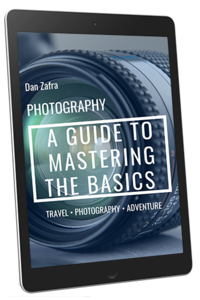
GET OUR FREE EBOOK TO
MASTER THE PHOTOGRAPHY BASICS
20 LESSONS AND 80+ PAGES WITH EXAMPLES, INFOGRAPHICS, TIPS, AND MORE!
What Does Camera Sensor Size Mean?
Digital camera sensor size is a topic only made complex by the varying needs of the photography community. However, understanding what a sensor is, is not. The sensor is the region of a digital camera that’s sensitive to light and records an image when active.
Sensors are usually measured in millimeters (and sometimes inches). For example, full-frame sensors are as close to standard 35mm film as possible (35.00 x 24.00mm). Sometimes, you’ll see some variation within 1-2mm within a format. APS-C has quite a bit of variation between brands.
Camera sensor size and image quality are correlated. But bigger doesn’t always mean better! Smaller sensors have not only uses but distinct advantages that we’ll discuss below.
Camera resolution, also known as the megapixel count is a measure of the number of individual photosites on a sensor. Megapixels and digital camera sensors have other relations we’ll get into later. But for now, you can relate megapixels (MP) to detail.
Digital Camera Sensor Size Comparison Chart
While numbers give us a good idea of what the different sizes are, it’s sometimes a challenge to truly visualize. This camera sensor size comparison chart displays the relative difference between each of the most common camera sensor formats on the market.
Camera Sensor Size and Types Comparison
The sensor size of mobile camera phones is variable in size but a 1/2.55″ sensor (used by the iPhone 11) is on the larger end of the spectrum.
1-inch camera sensors are the next size up and are used in most compact cameras. At 12.80 x 9.60mm, they are also large enough to capture a decent amount of light. The phantom 4 drone uses a 1″ sensor, as do many bridge (advanced compact) camera sensors.
Micro 4/3rds sensors at 17.00 x 13.00mm is the first step for interchangeable lens cameras. Swappable lenses give you creative flexibility and better image quality compared to the all-in-one zoom lenses on compact cameras. Panasonic and Olympus are the main Micro 4/3rds brands available.
Next comes APS-C camera sensor size, which shares an area of roughly 23.60 x 15.60mm. Many brands add or take away a mm here. Canon, Nikon, Fujifilm, Pentax, and Sony are the major APS-C manufacturers, and most of the cameras using this sensor size are aimed at beginners and intermediate photographers (with a few exceptions).
Getting started with an APS-C camera is one of the most popular tips in our beginner’s photography guide.
Full-frame sensor size is often used as a baseline for crop factor and other measurements. At 35.00 x 24.00mm, these sensors are the largest you’ll find in consumer models. Common full-frame camera brands include Sony, Canon, and Nikon, and most of the models are aimed at advanced and professional photographers.
If you want the biggest camera sensor sizes, you’ll need to be looking at medium format, which is a wider range, usually around 43.80 x 32.90mm to 53.0 x 40.20mm. From there large format also exists, but now we’re looking at six-figure prices. These camera sensor sizes are aimed at special needs, like for example, photographers that need an immense resolution for printing big images.
The Importance of Camera Sensor Size
Is the camera sensor size important? Absolutely – but it’s not (always) as linear as “bigger is better.” Understanding camera sensor size comes down to knowing the advantages each format has to offer. Once you do, you’ll be well equipped to choose what sensor size best suits your needs.
Camera Sensor Size and Image Quality
Differences in camera sensor size definitely impact image quality. But it’s important to determine what we mean by “image quality.” Are we talking about photo quality; how large of a print we can make? Sharpness? Resolution? Dynamic range? Depth of field?
As it turns out, even smartphone sensor sizes are innately good enough to make prints indistinguishable from a pro-level body leaving aside dynamic range and shallow depth of field. Therefore, we need to dive deeper into more details apart from the generic “Image quality” of a determined camera sensor size.
Camera Sensor Size vs Megapixels
Camera sensor size and resolution aren’t necessarily related to one another. A 20 MP phone camera and a 20 MP full-frame camera both have 20 million pixels and the same resolution. However, they don’t have the same image quality because the camera sensor size and pixel size make a difference.
A larger sensor allows you to have larger pixels relative to a smaller sensor with the same resolution. The larger pixels on the full-frame camera are more efficient at gathering light. They are not only more sensitive but have better dynamic range, allowing to get tack-sharp photos.
In good lighting and with modern technology, the gap is marginal. But as soon as the lighting grows even a little challenging, the impact of sensor and pixel size becomes increasingly obvious.
Camera Sensor Size and Focal Length
Sensor size and crop factor is not nearly as complicated as it appears to be.
Multiplying the crop factor of a sensor by the focal length of the lens gives you the equivalent view as if you were using a 35mm camera (a full-frame camera). For example, using a 35mm lens with an APS-C sensor with a 1.5x crop factor, gives you the equivalent of a 50mm view on a full-frame body. The smaller sensor window cuts down on the view provided by the 35mm lens. Easy!
Crop factor offers an easy mathematical conversion back to full-frame. However, if you aren’t trained on a full-frame view it’s not really important to keep thinking about viewpoints across formats.
Crop factor does give you additional reach as well, giving smaller sensors advantages when shooting subjects from afar. A 200mm lens on a Micro 4/3rds body (2.0x crop factor) has the reach of a 400mm full-frame camera and weighs quite a bit less.
Camera Sensor Size and Depth of Field
Sensor size and aperture settings is important to understand because aperture has a similar effect on depth of field. When we stop down the aperture from f/2 to f/2.8, the amount of our subject in focus increases. Using a smaller sensor with a given lens aperture has a similar effect.
According to this, smaller camera sensor sizes offer a smaller depth of field as compared to bigger camera sensor sizes (when using the same aperture and focal length). Similarly, the smaller the size of your camera’s sensor, the further away the hyperfocal distance will be.
*Please note that we’re considering the same focal length in this camera sensor size vs. depth of field comparison. If we consider the same field of view, the depth of field will be narrower in cameras with larger sensors and larger in cameras with cropped sensors.
Sensor size’s effect on aperture is roughly a stop of light per step of area. If we use medium format as a baseline, full-frame offers a stop less of depth of field in terms of aperture. For example, f/2 on full-frame is equivalent to f/2.8 on medium format in terms of depth of field.
APS-C is a stop less than full-frame, and 2 stops less than medium format. For the purpose of subject isolation, f/2 on APS-C has the look of f/2.8 in full-frame and f/4 medium format. Micro 4/3rds is another stop below, and so on down the line.
You can learn more about this in our DoF in photography article or in our PDF photography basics guide.
Camera Sensor Size in Low Light Photography
ISO and camera sensor size are also related; ISO 800 on Micro 4/3rds camera sensors won’t look nearly as clean as ISO 800 on full-frame sensors. To keep things simple, just be aware that ISO isn’t a consistent standard across brands, let alone sensor frame sizes. I cover ISO and noise in photography with a bit more depth here!
If you love night sky photography, including Photographing the Milky Way or shooting Northern Lights, you want both large-aperture lenses and a camera with a large sensor size. Full-frame sensors are a good camera sensor sizes if you enjoy low-light photography because they are currently the best balance between sensor and body size.
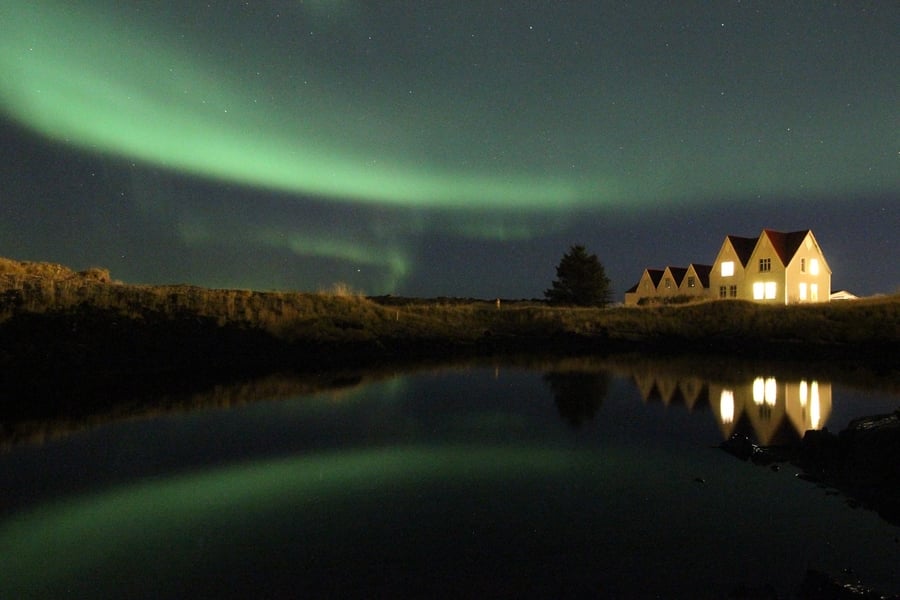
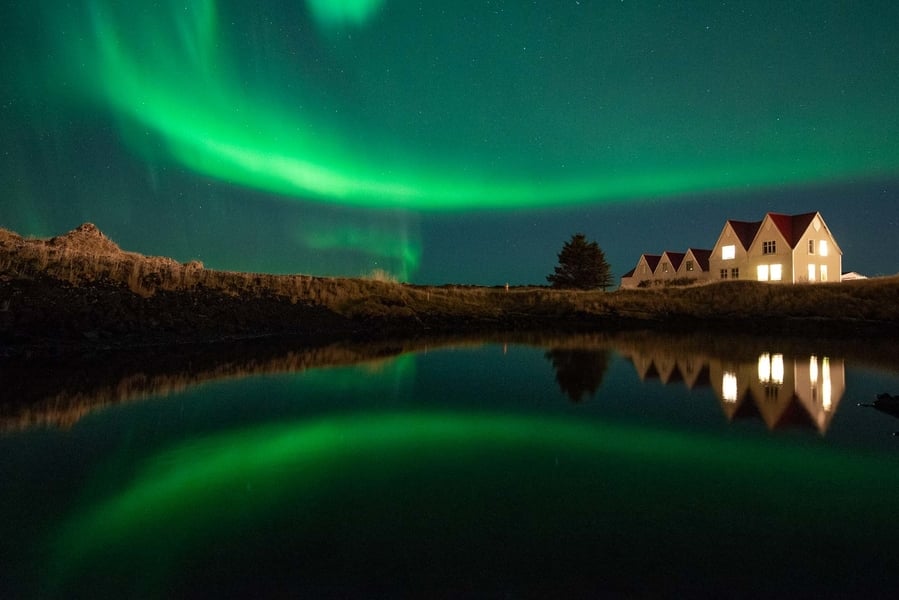
Aurora shot with an entry-level Canon APS-C sensor (left) and with a Nikon Full-Frame sensor
You can learn more about ISO in photography in our guide.
Which is the Best Camera Sensor Size?
Now that you know how camera sensor size affects photo quality we can discuss what is a good sensor size for you? Unfortunately, the answer is another question: what are your needs as a photographer?
If you’re a photographer who regularly makes large poster prints and wants the maximum amount of dynamic range and resolution, full-frame and medium format are the best choices for you.
Full-frame is the best balance between body size, depth of field, low-light performance, and resolution you’ll find in today’s market. Portrait, fashion, astro, and landscape photographers usually find the most benefit from full-frame on up, despite the price and weight tax.
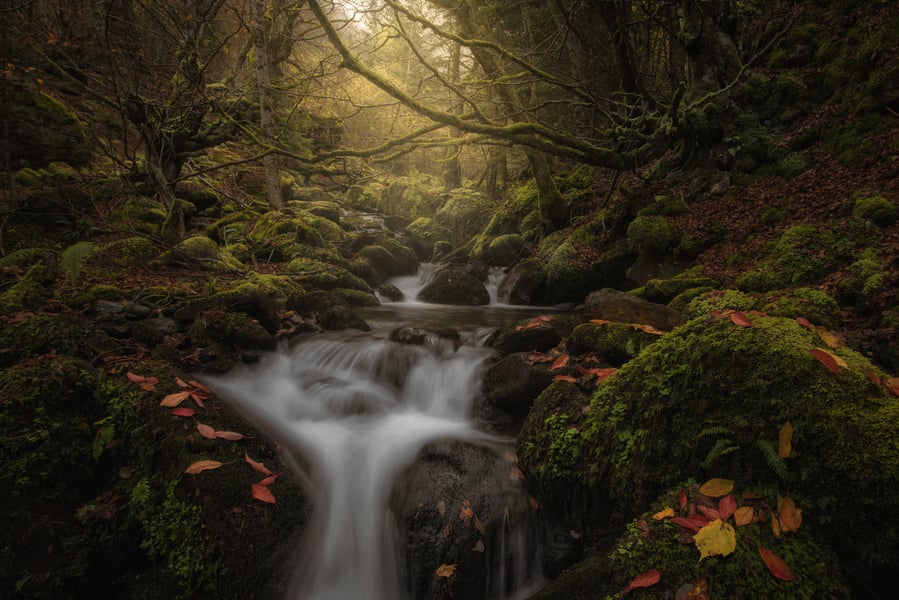
Image taken with a Nikon Full-frame sensor
However, APS-C camera sensor sizes are still highly relevant. APS-C compared to full-frame sensors have a smaller depth of field, resolution and pixel size. In exchange, body and lens sizes are reduced. And the range boost offered by the crop factor makes them great choices for generalist photographers who want a bit of everything.
Micro 4/3rds has a significant crop over full-frame while still providing professional-level image quality. Wildlife, street, and documentary photographers may find the extra reach combined with the size of the bodies and lenses perfect for their needs.
When looking at 1″ and 1/2.55″ smartphone and iPhone sensors, since they tend to be fixed lens models, you should give much more thought to what other features the camera is providing.
My personal experience with camera sensor sizes
As a personal experience, I started my photographic journey with an APS-C camera sensor size (Nikon D3200). This sensor fulfilled all my needs when I was starting and doing generic photography, but after a couple of years it fell behind in many aspects as I turned to shoot mostly landscape and night photography.

Milky Way Image shot with my first Nikon D3200 (APS-C sensor)
I decided to make the leap for a full-frame camera sensor (Nikon D800), and it was one of the best decisions I ever made, having a substantial improvement in the results of my landscape images.

Milky Way Image shot with the Nikon D800 (Full-Frame sensor)
My advice is, if you’re new to photography, start with a small camera sensor size like APS-C and, once you know your real photographic needs, decide the best camera sensor size according to your needs. As you shoot and improve, you’ll see naturally if an upgrade to a full-frame camera sensor size is worth it or not, as bigger camera sensor sizes are not only heavier and pricier but also require a bigger investment in lenses, computer hardware, etc.
Digital Camera Sensor F.A.Q
Below you’ll find the answer to some of the most common questions I receive related to digital camera sensor sizes.
Conclusion
Camera sensor sizes is a geek topic that can get into very technical details. My goal, however, was to show camera sensor size explained in a digestible and easy way.
The best camera sensor size doesn’t exist, but it depends completely on your needs.
Before choosing which is the best for you, make sure you are familiar with the different camera sensor sizes in the market, what are the pros and cons of each sensor size, and try to make a balance between your budget and your photographic goals.
Camera doesn’t make the photographer but the right camera sensor size will help you take the images you’re dreaming of!
Please let me know any questions related to digital camera sensor size on the comments!
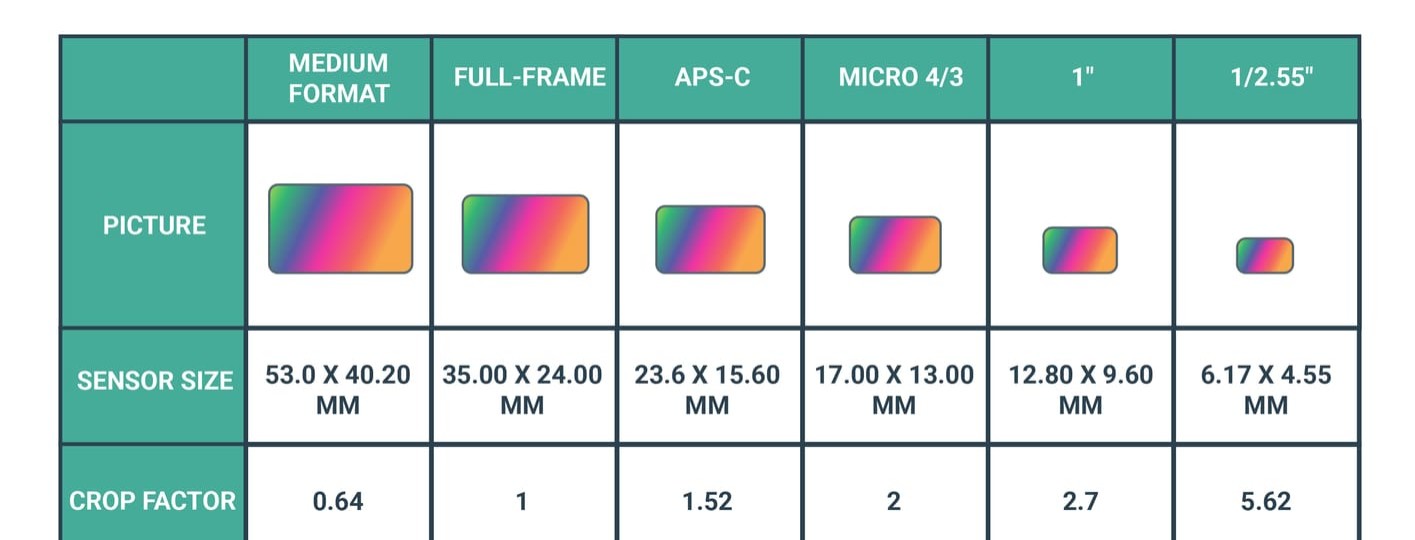
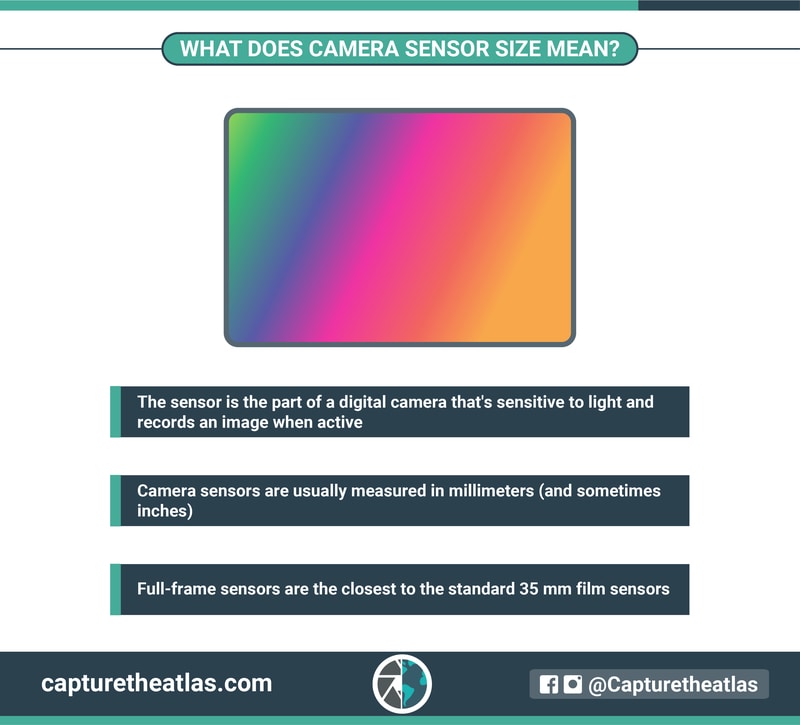
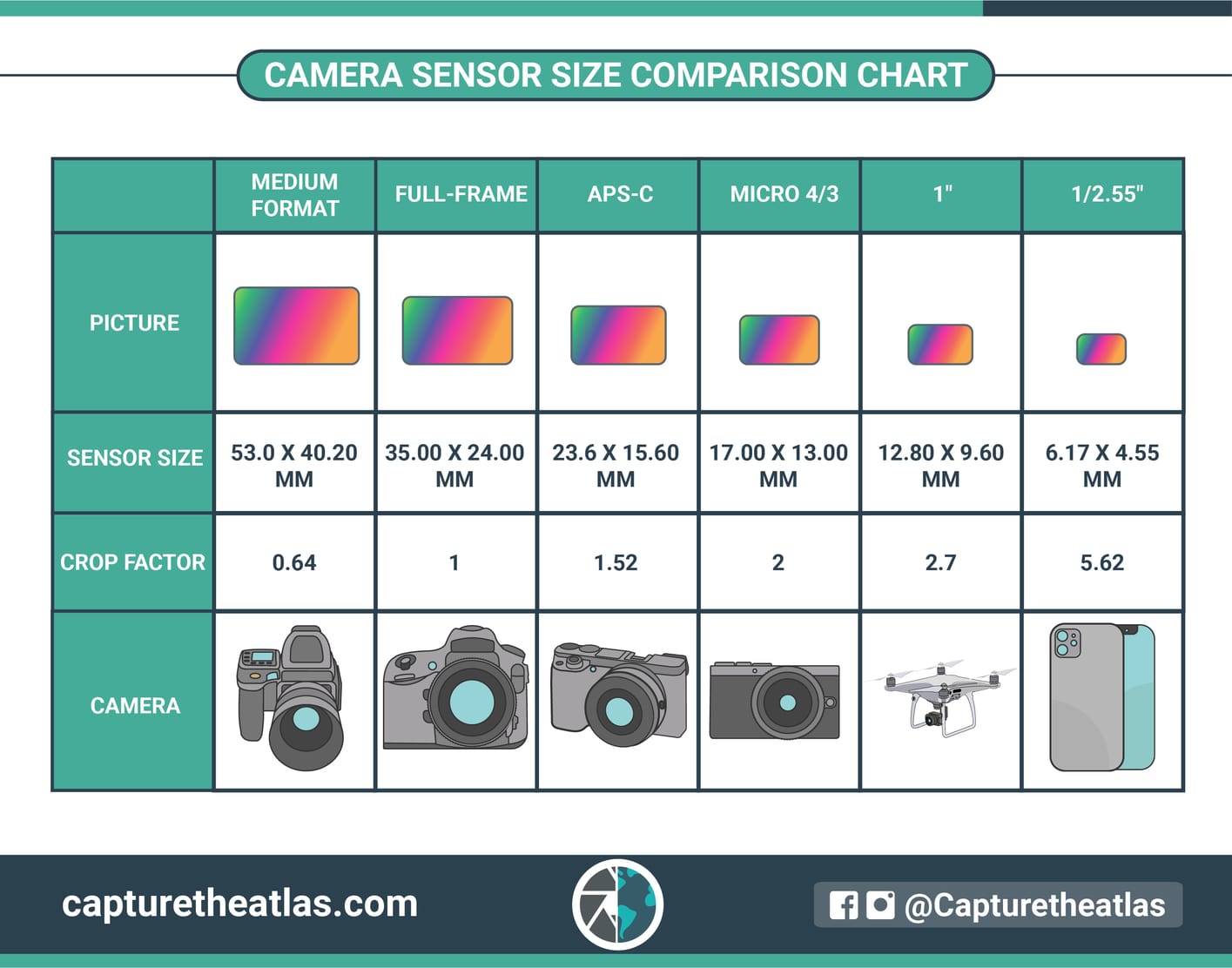
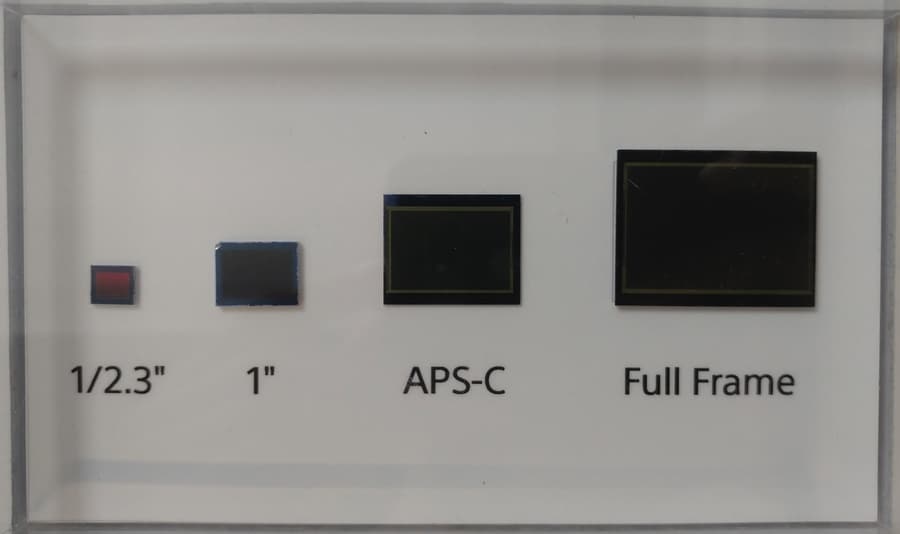
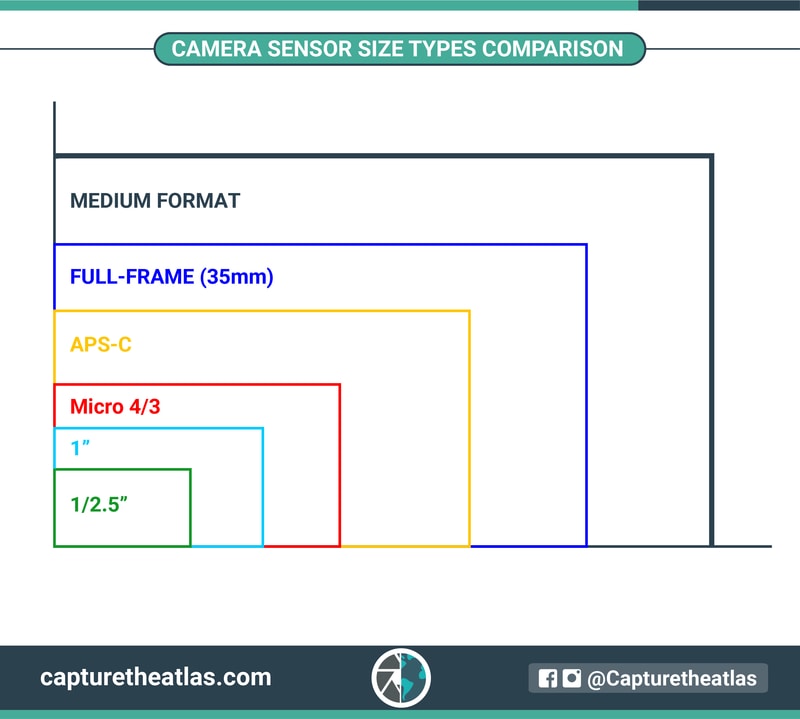
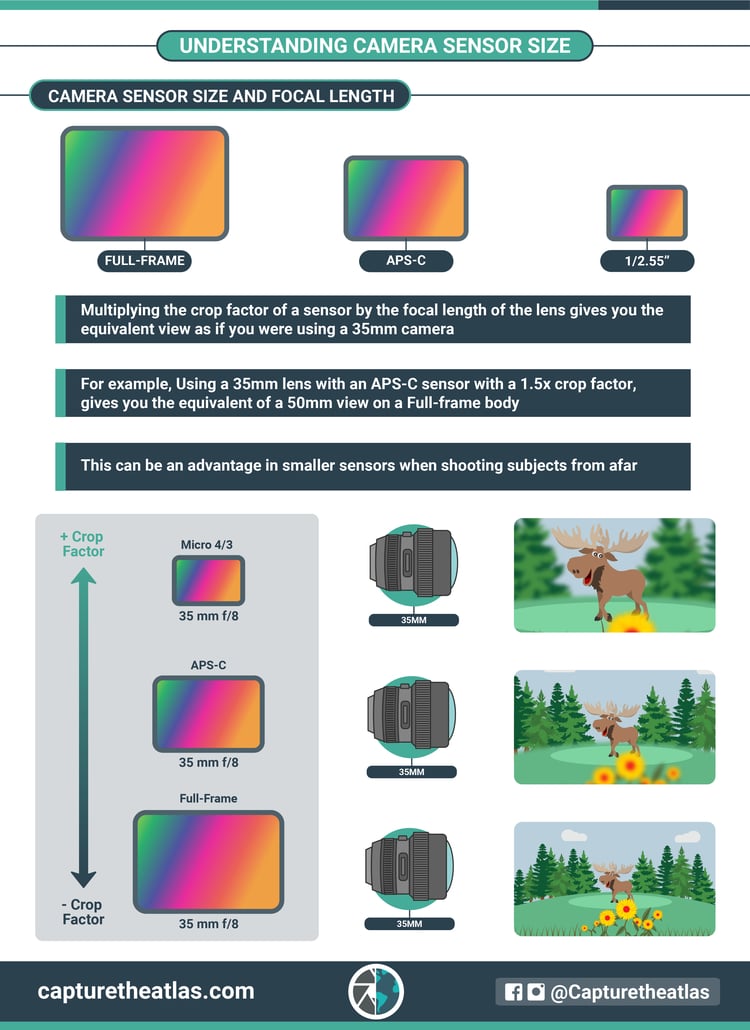

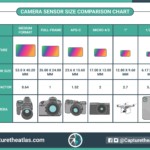
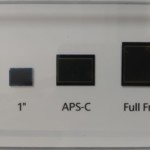
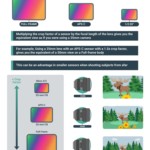

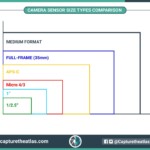

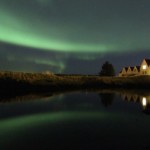
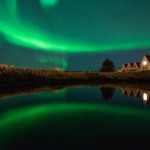


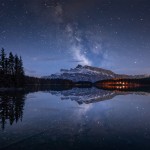
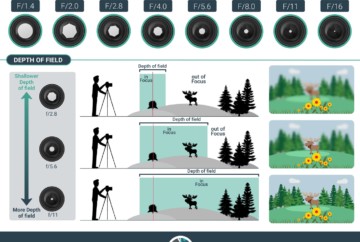
![noise in photography [:es]Milky way two jack lake banff canada alberta mirror pines sky photography night banff montañas rocosas de canada [:en]Milky way two jack lake banff canada alberta mirror pines sky photography night[:] where to stay in banff](https://imgcap.capturetheatlas.com/wp-content/uploads/2017/06/two-jack-mirror-milkyway-360x242.jpg)








Hi, i just want to say thanks for providing those slides pictures. It helped me immensely as a beginner. (i almost gave up on photography due to the huge learning curve, i truly thank you from my heart).
Thanks a lot Dave!!
Hi, i just want to say thanks for providing those slides pictures. It helped me immensely as a beginner. (i almost gave up on photography due to the huge learning curve, i truly thank you from my heart).
You’re welcome! So happy it helped 🙂
You really need to fix that part about the DoF and sensor sizes. It’s just wrong.
You are writing about having the same focal length on the big and small sensor when in actuality, what you WANT to write is: the same EQUIVALENT focal length (field of view).
That is the MOST important thing about cropped sensors. They don’t change the physics behind the picture physics…they just…well…crop the image. And nothing else.
“Smaller camera sensors –> Less depth of field, further hyperfocal distance
Bigger camera sensors –> More depth of field, shorter hyperfocal distance
Please bear in mind that we are considering that the aperture, focal length, and focusing distance is the same.”
This is just flat out wrong. If you use the same aperture, focal length and focusing distance, the DoF and hyperfocal distance will be exactly the same, because the size of the sensor has absolutely nothing to do with DoF. Why would it? All the DoF magic happened before it. The sensor is just there to capture it.
You reeealy need to straighten that out, as this article is fairly popular.
All you need to do is: pin a bolded note, that the aperture, focusing distance and EQUIVALENT (multiplied by the crop factor) focal length are the same…then what you are saying holds true. Because, the bigger sensor will in effect, use a higher focal length, to give you the same field of vision (BUT THE FOCAL LENGHT OF BOTH LENSES WILL BE DRAMATICLY DIFFERENT! THAT IS WHY THERE WILL BE A CHANGE IN DOF!)
Hi,
Thanks for sharing. If you read through older comments, you can see the explanation for this 😉
Hi Dan,
I am considering buying a mirrorless camera and have shortlisted three options based on my price range. 1)Nikon Z5 2) Canon EOS RP 3)Sony A7 III
Which one would you recommend to me? I have heard from a couple of folks on YT and in person that Nikon was a bit late into the mirrorless cameras and the availability of lenses is not that good.
Please share your views on the same.
Thank you.
Hi Max, I’d say the Sony A7IV. It’s a very versatile camera.
Hi Dan,
I want to make a comment on your slide concerning depth-of-field versus sensor size.
When using the same lens with the same aperture (like shown on the slide: 35mm f/8) than it will have the same depth of field, whatever the sensor is.
Indeed the light photons going trough the lens do not know on which sensor they will be captured, so their diffraction pattern will not change because the sensor size changes…
The thing is that if you want the same field of view, then you will need different lenses on both cameras: for a field of view of a 50mm on a full frame you will need a 25mm lens on a micro 4/3. And of course, then your depth of view will be much larger on the 25mm lens. But then you are using another lens!
So what does a sensor size then: well in the article the comparison is made between a 200mm on a micro 4/3 which has the same field of view as a 400mm on a full frame. Well again: if you put a 200mm lens with some aperture and you take a photo with a full frame sensor, after which you perform a digital crop (zoom) to have the field of view of a 400mm lens (full frame equivalent), then you will have the exact same photo as when using the same lens with the same aperture on a micro 4/3. Again the lens is the lens, light does not behave differently because the sensor changes… the smaller sensor only takes out a smaller region from the projected image coming out of the lens.
In other words, the quality of the 200mm photo on a micro 4/3 (thus 400mm equivalent field of view) will be the same as a digital zoomed image on the full frame camera. This of course if the number of pixels/mm2 would be the same and the sensor quality would be the same.
Anyhow, taking marvelous photos does not depend on camera technology, but from the person behind the camera…
Nice photos by the way!
Hi Luc,
Thanks for adding all your insights and explanations about camera sensor size to the article!
With the slide I just wanted to represent the different field of view that you can get depending on the focal length and sensor size that you use. In practical terms, the lens is the lens, but depending on your goals it’s good to know how the same focal length can change what you capture.
I’m sure that your comment will help understand this complex topic to other photographers who want to learn more in-depth about this.
Also, I totally agree on your statement, the person makes everything 😉
Happy captures!
Dan
Hi,
I found the article interesting as it seemed to explain the differences more clearly. You are not trying to advoccate everyone should own a mirrorless full frame sensor as minimum. For a while now, I have been looking at getting a Sony RX10 IV bridge camera mainly for the zoom capabilities plus detail captured under good light.
As for mobile phone cameras, the current available these are days can be good for astrophotography of the night sky using the largest camera sensor with best F Stop setting. Although a professional would at least need to consider APS-C or thereabouts for the desired results. I own the Samsung Galaxy Ultra S21 which largest lens is 26mm /f1.8 at 1/1.33 equivalent 35mm focal length. The telephoto lenses can’t capture as much light although they do give reasonable amount of detail when magnifing in focus objects.
Also there is a lot to capturing the perfect nightshot although this is where cameras become a more expensive hobby & time consuming. The perfect camera costs twice the average persons budget and then you have the lenses. I was looking at some Sony lenses which are over £10,000 each which really means it’s an expensive thing to be involved with.
Anyway I found this guide easy to digest and understand. Some youtube videos and reviews just confuse the hell out of me.
Cheers,
Aaron
Thanks for your comment, Aaron!
The right camera sensor depends completely on your skills, budget, and goals. As a professional landscape astrophotographer, I prefer Full Frame sensors without a big pixel count. 23 MPX is a nice sweet spot for me. High-quality glass is expensive but there are third-party brands like Rokinon building great lenses for a fair price. I recommend checking our best cameras models for Milky Way if you are also interested in that topic 😉
Best,
Dan
Hey Dan, thanks for the info and I’m curious if you have used the Sony A7R iv(a) for Milky Way photography personally and have you seen a undesirable increase in shadow noise with this platform as opposed to the larger pixel full frames cameras you’ve used?
Rick,
I’ve extensively used the Sony A7RIV for Astro and, surprisingly, it doesn’t produce much noise for being a camera with such a high resolution. Sony image processor is amazing and that helps a lot. If you take a Sony A7RIV file and you downscale it to the size of a 24 mpx file, the noise won’t be more noticeable than in a lower res. camera. I also have a Sony A7III astromodified and the general results for Astro are better, but I’ve always been greatly surprised by the A7RIV sensor performance.
Best,
Dan
I’m new to your site, but I find it well written and very educational.
I was shooting with a Nikon D5500, until the shutter failed while shooting an eclipse on a cold night. So, I decided to invest in a full-frame camera. I bought a Nikon Z5, my first full-frame camera, and a mirrorless. I’m thrilled with the results. Your explanation of sensor specs helped confirm the value of my decision.
Keep up the good work.
Thanks Gary!
The Z5 is a great camera and you can shoot almost any genre with good results.
I’m sure that you’ll see a huge difference compared to your older Nikon D5500 😉
Finally clear of the concept.
Thanks! glad to see it helped!
A smaller sensor will have less field of view when the aperture (F) and lens zoom (mm, using 35mm lens scale) are the same. But a smaller sensor has a greater depth of view when the lens is zoomed to the same field of view (angle) and the same aperture.
“According to this, smaller camera sensor sizes offer a smaller depth of field as compared to bigger camera sensor sizes (when using the same aperture and focal length). Similarly, the smaller the size of your camera’s sensor, the further away the hyperfocal distance will be.”
seems a bit confusing.
Hi Tygrus,
trying to explain it in a more straightforward way:
Smaller camera sensors –> Less depth of field, further hyperfocal distance
Bigger camera sensors –> More depth of field, shorter hyperfocal distance
Please bear in mind that we are considering that the aperture, focal length, and focusing distance is the same.
Hope this helps!
Dan
Would you hold the same opinion now with the GFX 100s and faster lenses in medium format? The full frame area is not necessarily as clearly the defined all around winner now? I mean … the new GFX100s with a F1.7 lens or 2.8 stabilized is going to give you an all round better image quality no? In terms of low light surely this a good all rounder now? Interested to know your thoughts.
I am looking to invest in the best image quality for Architectural images and low light concert shots, going through the minefield of available options is overwhelming now…! I am on full frame and notice the light capturing is better than APC-S mostly, but surely I would get significant gains on a Medium format (slightly cropped) with faster lenses and the advantage of smaller camera body.
Hi Alex!
Thanks for bringing up this interesting topic!
Even though I’ve heard many great things about the GFX100s, being honest I haven’t tested that camera model yet. However, even though they’re doing things great and technology is improving, there’s one key thing to consider when it comes to low-light, and that’s the pixel pitch. In that specific model, you have a medium format sensor, but there are 100+ mpx in that sensor, which means that the pixels won’t be that big. Taking a camera like the Sony A7SIII with just 12 mpx on a Full-frame sensor, will render more quality in low-light since the size of the pixels is much larger. If you’re looking into the best camera sensor for low-light, always consider the biggest possible pixels, and those are easier to find in FF cameras (That’s also why you saw a significant difference compared to the APS-C sensor).
For other genres like architecture, portraiture, or even daytime landscape, the GFX100s must be an incredible camera and system, but I wouldn’t take it for low-light.
Best,
Dan
No, iPhone 11’s 1/2.55″ is by no means on the larger end of the spectrum (even back then), it is the most common size back then, but there are bigger phone sensors which are larger.
Photos of milkyway for comparison are misleading. I agree, you may not have had same cameras at thr same night to compare and you put them up based on your experience… But we don’t know that. I suggest the comparison be more technical instead of subjective is same object for photographing isn’t available.
Photo comparison of Aurora- to me, more than the differences in the camera sensor, it looks a difference in processing and/or camera profiles.
Rest, the article is good. It is pretty handy.
Hi Rajesh,
Thanks for your comment!
Smartphone camera sensors are advancing quickly and there are of course bigger sensors today, we just put 1/2.55″ as an example since it’s still one of the most common and standard sensors in smartphones as of 2020.
As regards the Aurora shots, both are raw files taken with a similar (flat) color profile. There are certainly better crop sensor cameras like the Fuji Xt-3 and other models but in this case we’re comparing an entry-level aps-c with a FF camera sensor.
Hope this clarifies!
Dan
The stuff about DOF is a little misleading.
Hi Canon,
In the camera sensor size vs. depth of field comparison, we’re considering always the same aperture and focal length, in which case larger sensors provide a larger depth of field (you can test this using any DoF app like Photopills.
As I mention in the note below the Depth of field infographic, if we consider the same angle of view, then the DoF will be narrower in larger sensors.
Hope this helps to clarify.
Dan